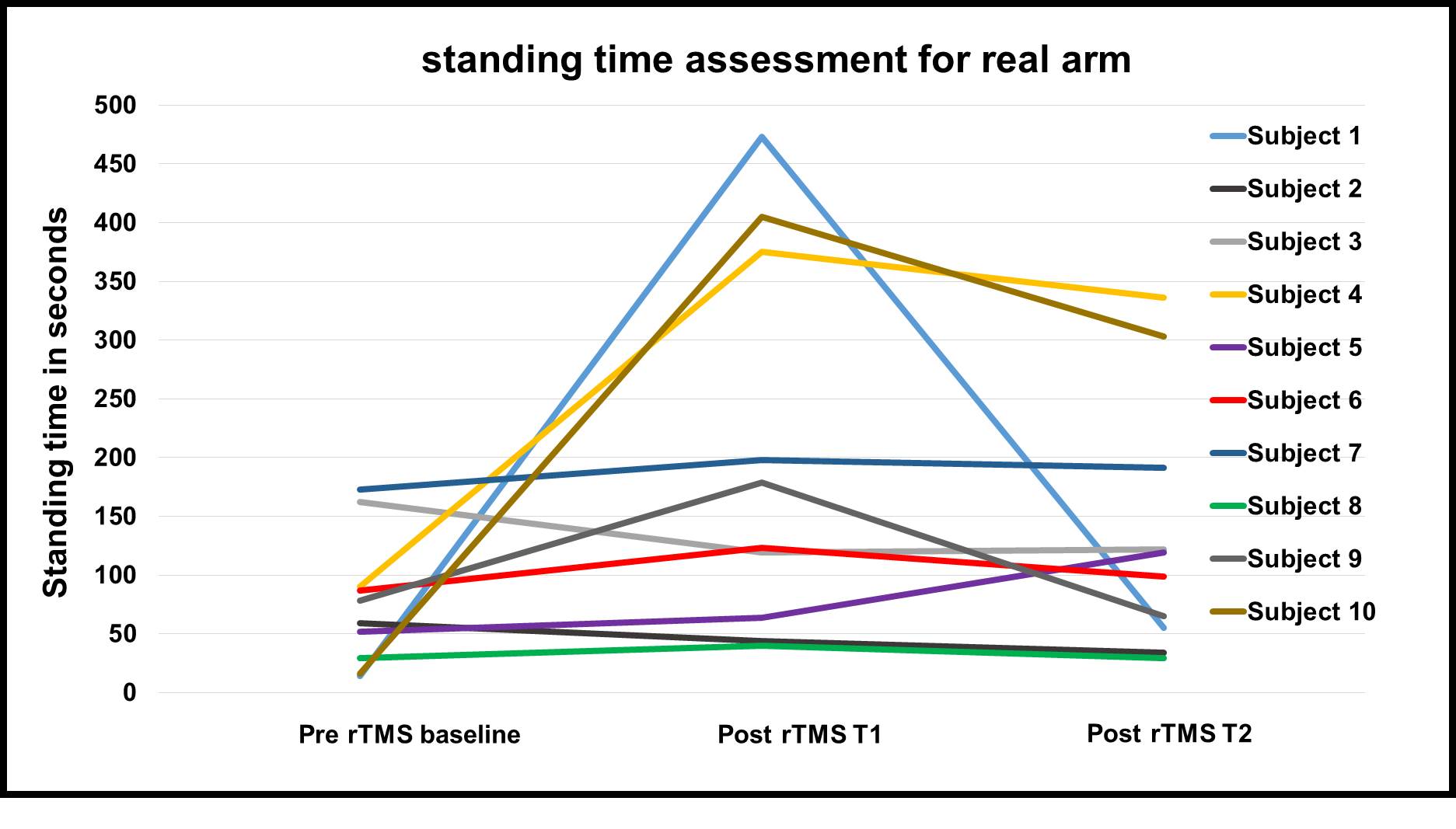Session Information
Date: Sunday, October 7, 2018
Session Title: Tremor
Session Time: 1:45pm-3:15pm
Location: Hall 3FG
Objective: Determine whether low frequency repetitive transcranial magnetic stimulation (rTMS) therapy to the cerebellum improves symptoms in primary orthostatic tremor (POT)
Background: POT is a rare disabling tremor disorder characterized by high frequency tremor appearing in the legs upon standing. Treatment opportunities for POT are poor. Previous research found an increased cerebellar activity and low frequency rTMS reduces increased brain excitability.
Methods: Patients diagnosed with POT participated in a randomized double-blind placebo-controlled crossover-design study. All subjects received single session of real and sham rTMS session delivered to each cerebellar hemisphere on two separate days in random order. Nine hundred pulses were delivered consecutively to each side at a frequency of 1 Hz and at an intensity of 90% of the resting motor threshold (hand motor area). The primary outcome was the mean difference between the two arms for the Fullerton Advanced Balance Rating Scale (FABRS) standing score and the blinded video-rated standing duration measured immediately after rTMS (T1) and 60+ minutes after rTMS (T2) compared to before rTMS therapy (baseline, T0).
Results: 10 POT subjects (6 females and 4 males, mean age 70.2 ± 8.0 years, mean disease duration 13.5 ± 5.8 years) participated and tolerated the therapy well. Compared to baseline, subjects randomized to the real arm improved significantly on the FABRS standing score (baseline score 1.3; T1 score 2.3; p = 0.02) at T1 than those in the sham arm. With regards to video-rated standing duration time, there was mean increase of 126.0 ± 172.8 sec in the real arm compared to 12.9 ± 49.9 sec in the sham arm that approached significance (p = 0.11). However, at an individual level, there were 8/10 subjects in the real arm showed improvement (figure). No significant improvements were seen at T2.
Conclusions: Low frequency rTMS to cerebellum is a promising therapy for POT however requires confirmation in a larger follow-up study. A longer duration of rTMS will likely result in longer benefits.
To cite this abstract in AMA style:
W. Hu, J. Legacy, A. Ferng, A. Wagle Shukla. Repetitive Transcranial Magnetic Stimulation Therapy is a Potential Therapeutic option for Primary Orthostatic Tremor [abstract]. Mov Disord. 2018; 33 (suppl 2). https://www.mdsabstracts.org/abstract/repetitive-transcranial-magnetic-stimulation-therapy-is-a-potential-therapeutic-option-for-primary-orthostatic-tremor/. Accessed December 30, 2025.« Back to 2018 International Congress
MDS Abstracts - https://www.mdsabstracts.org/abstract/repetitive-transcranial-magnetic-stimulation-therapy-is-a-potential-therapeutic-option-for-primary-orthostatic-tremor/

